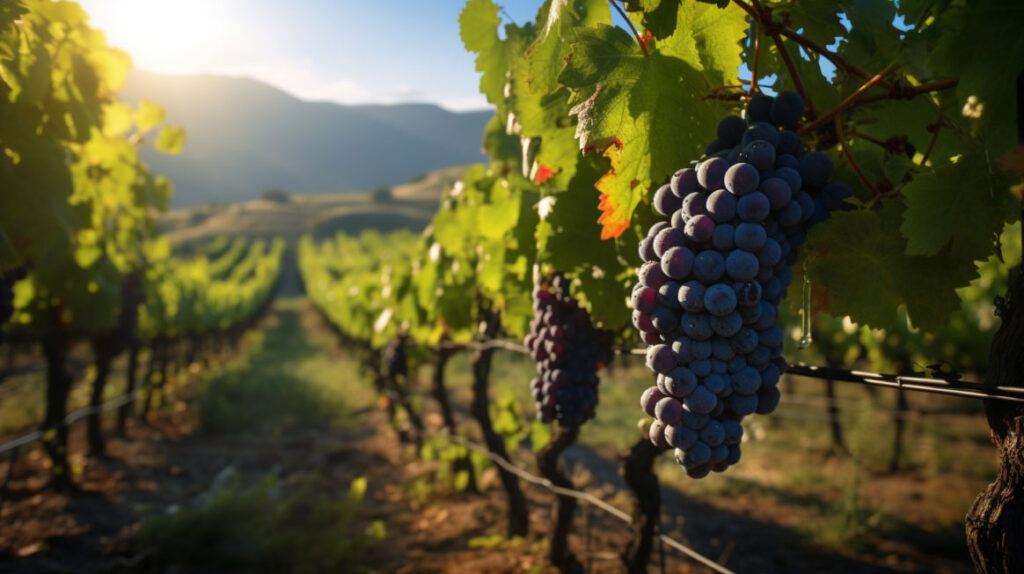
From Vine to Barrel: Wine's Journey
The art of winemaking begins in the vineyard, where grapevines are cultivated through seasons of growth, flowering, and ripening. Harvesting occurs when grapes reach optimal maturity, balancing sugar and acidity levels. Post-harvest, grapes are destemmed and crushed to release juice. Fermentation follows, converting sugars into alcohol, with red wines fermenting with skins for colour and tannins, while whites are typically fermented without skins. The young wine is then clarified to remove solids, and aged in barrels or tanks to develop complexity. Finally, the matured wine is bottled, ready to be enjoyed. Each step is crucial in crafting wines of character and quality.
Understanding industry-specific abbreviations is essential for navigating the world of wine. Here are some commonly used terms:
ABV (Alcohol by Volume): Indicates the percentage of alcohol in the wine.
DOC (Denominazione di Origine Controllata): Italian quality assurance label for wines.
AOC (Appellation d’Origine Contrôlée): French certification granted to certain geographical indications for wines.
IGP (Indication Géographique Protégée): EU designation for wines with specific geographic origin.
NV (Non-Vintage): Wine blended from multiple vintages.
RS (Residual Sugar): Amount of sugar remaining in wine after fermentation.
MLF (Malolactic Fermentation): Secondary fermentation converting malic acid to lactic acid, softening the wine.
TA (Titratable Acidity): Measure of the total acidity in wine.
pH: Indicates the acidity or alkalinity of the wine.
TCA (2,4,6-Trichloroanisole): Compound responsible for cork taint in wines.
Wine barrels come in various sizes, each influencing the aging process and flavour development:
Barrique (225 litres): Traditional Bordeaux barrel, commonly used for red wines.
Hogshead (300 litres): Larger barrel, offering slower aging and subtle oak influence.
Puncheon (500 litres): Used for both red and white wines, providing balanced oak integration.
Butt (475–500 litres): Commonly used for sherry; occasionally for wine aging.
Pipe (550 litres): Traditionally used for port wine aging.
Foudre (1,000–1,200 litres): Large upright cask, used for aging wines with minimal oak influence.
Demijohn (4.5–54 litres): Glass vessel used for small-scale fermentation or storage.
The choice of barrel size affects the wine’s exposure to oxygen and oak, influencing its maturation and flavour profile.
Wine is bottled in various sizes, each serving different purposes, from individual servings to large gatherings.
Split or Piccolo (187.5 ml): A quarter of a standard bottle, typically used for single servings, especially for Champagne.
Half or Demi (375 ml): Half the size of a standard bottle, ideal for two glasses of wine.
Standard Bottle (750 ml): The most common size, yielding approximately five glasses of wine.
Magnum (1.5 L): Equivalent to two standard bottles; often used for aging red wines and Champagne.
Jeroboam (3 L): Holds four standard bottles; used for larger gatherings.
Rehoboam (4.5 L): Contains six standard bottles; primarily used for Champagne.
Methuselah (6 L): Equal to eight standard bottles; used for sparkling wines.
Salmanazar (9 L): Holds twelve standard bottles; suitable for large events.
Balthazar (12 L): Contains sixteen standard bottles; often used for Champagne.
Nebuchadnezzar (15 L): Holds twenty standard bottles; used for grand occasions.
These varying bottle sizes not only serve practical purposes but also influence the aging process and presentation of the wine.


Harvesting and Crushing: Initiating Winemaking
The winemaking process commences with the careful harvesting of grapes, either by hand or machine, ensuring optimal ripeness. Once collected, grapes undergo destemming to remove stalks, followed by crushing to release the juice. For white wines, the juice is promptly separated from skins to maintain clarity, while red wines ferment with skins to extract colour and tannins. This initial phase is critical, as it sets the foundation for the wine's flavour, aroma, and structure. Precision during harvesting and crushing ensures the preservation of grape quality, directly influencing the character and quality of the final wine product.
Fermentation: Transforming Juice into Wine
Fermentation is the pivotal process where grape sugars are converted into alcohol by yeast. In temperature-controlled vessels, either stainless steel tanks or oak barrels, yeast consumes the sugars, producing alcohol and carbon dioxide. The duration and temperature of fermentation influence the wine's flavour and aroma profile. Red wines typically ferment with skins, enhancing colour and tannin extraction, while white wines ferment without skins to preserve delicate aromas. Some wines undergo malolactic fermentation, softening acidity and adding complexity. This transformative stage is meticulously monitored to ensure the development of desired characteristics, laying the groundwork for the wine's final expression.
Clarification and Aging: Refining the Wine
Post-fermentation, wines undergo clarification to remove suspended solids, enhancing clarity and stability. Techniques include racking, where wine is siphoned off sediment, and fining, which uses agents to bind and remove unwanted particles. Filtration may also be employed for further refinement. Aging follows, either in stainless steel tanks for freshness or oak barrels for added complexity and flavour integration. The aging duration varies, influencing the wine's body, tannin structure, and aromatic profile. This phase allows the wine to mature, harmonising its components and developing depth, ultimately preparing it for bottling and consumption.
Bottling and Beyond: Finalising Production
Once the wine has matured to the desired profile, it undergoes final filtration and stabilization to ensure clarity and prevent spoilage. Bottling follows, with wines filled into sterilised bottles under inert gas to prevent oxidation. Closures, such as corks or screw caps, seal the bottles, preserving the wine's integrity. Labels are applied, providing essential information and branding. Some wines may benefit from additional bottle aging, allowing further development of flavours. The culmination of meticulous processes, bottling marks the transition from production to market, where the wine is ready to be distributed, sold, and ultimately enjoyed by consumers.



